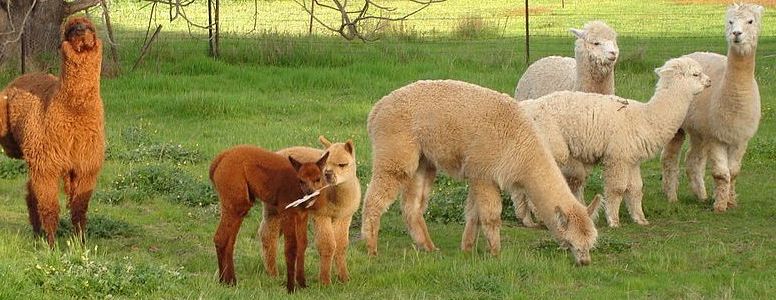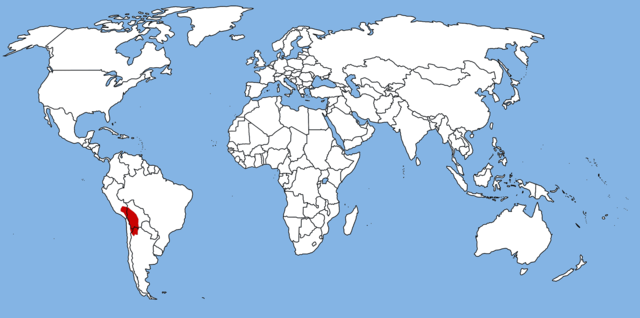
Where do alpacas live?
The alpaca originated from Peru. They were thought to be domesticated by the Indians of the Andes Mountains.(6) They live in the high mountain foot hills.
Now Vicunga pacos can be found all over South America in Bolivia, Ecuador, and Chile. Because they have been imported for their fleece they can be found in the United States, the United Kingdom, and Australia. They are found all over, because they live on alpaca farms. They are kept as pets and also for their fleece.
The Camelids are found along the Andean Zone in Bolivia between two ranges, the Cordillera Oriental and the Cordillera Occidental.
They can be found in all different areas including Altiplano, the Salar de Uyuni,
around the hydrographic basins
of Lake Titicaca and Lake Poopó, the Desaguadero River,
temporary lakes, and in a number of valleys. (13)
The llama and alpaca are found in the Altiplano range. This stretches
from the bottom of Peru, Bolivia, the Eastern edge of Chile and
Argentina. The both live in an area of high altitude where the
temperature can change rapidly and the ground can be
frosted over half the year.(13)
The alpacas live in the humid and wet ecological niche of the North and
West Altiplano, while the llama lives in the cold, dry East and South. (13)
There is no agriculture where the alpaca lives, the economy is based on
livestock.(13)
Who lives around the alpacas?
There is not a lot of diversity where the alpacas live because of the
fact that there is
not a lot of oxygen in the high elevations. They live near flamingos,
condors, spectaced bears, mountain lions, coyotes, llamas, and sheep.
Sometimes alpacas, llamas, and sheep graze together in herds in South America. They all occupy different niches of the habitat. Llamas had the greatest eating rate, second is alpacas, and lastly is sheep. Llamas tend to eat tall, coarse bunchgrasses and low-growing grasses. While Alpacas and sheep tended to graze on low-growing grasses and forbs. Llamas are more adapted than the rest of the Camelids and sheep because they occupy different foraging niches. The llama can also occupy drier niches. Alpacas are right in the middle of the sheep and llamas. During the wetter seasons the alpaca tends to eat more like the llama, but during the drier seasons the alpaca tends to eat more like the sheep.(2)

In Peru, alpacas are sometimes kept with herds of sheep. They help protect the sheep when they are out grazing in the Andes. The alpaca is tall and can see predators coming towards the herd. The alpaca will protect the sheep by chasing the predators away; they are like policemen (5) This is why the alpaca is named Vicugna pacos because pacos means policeman. Click here for full classification!
